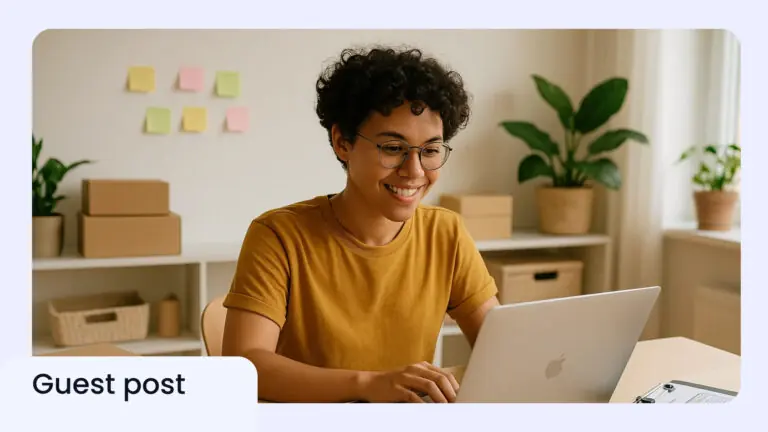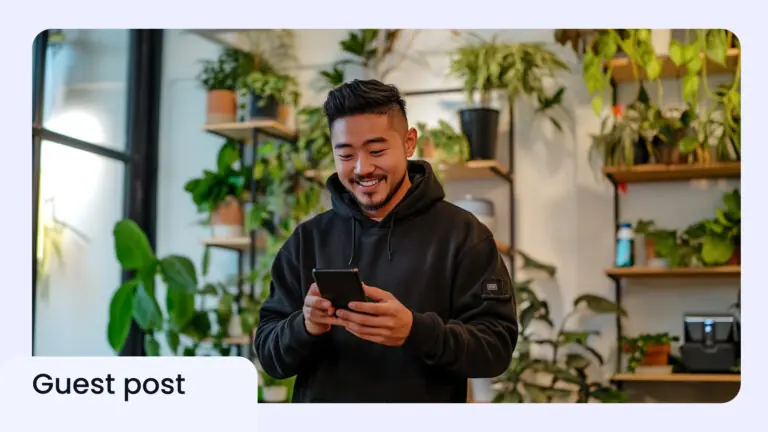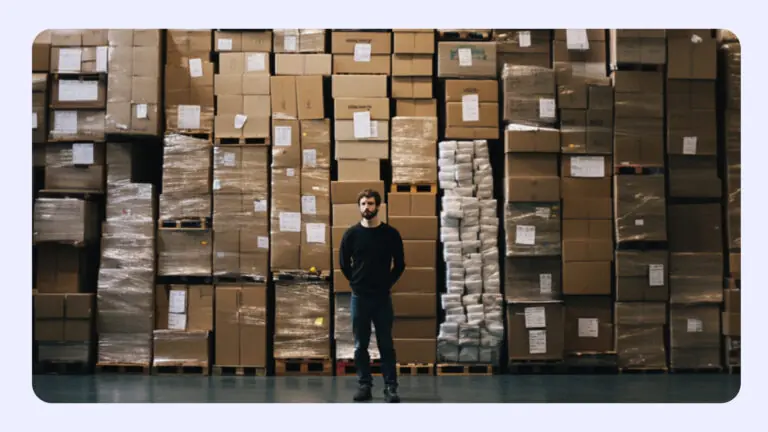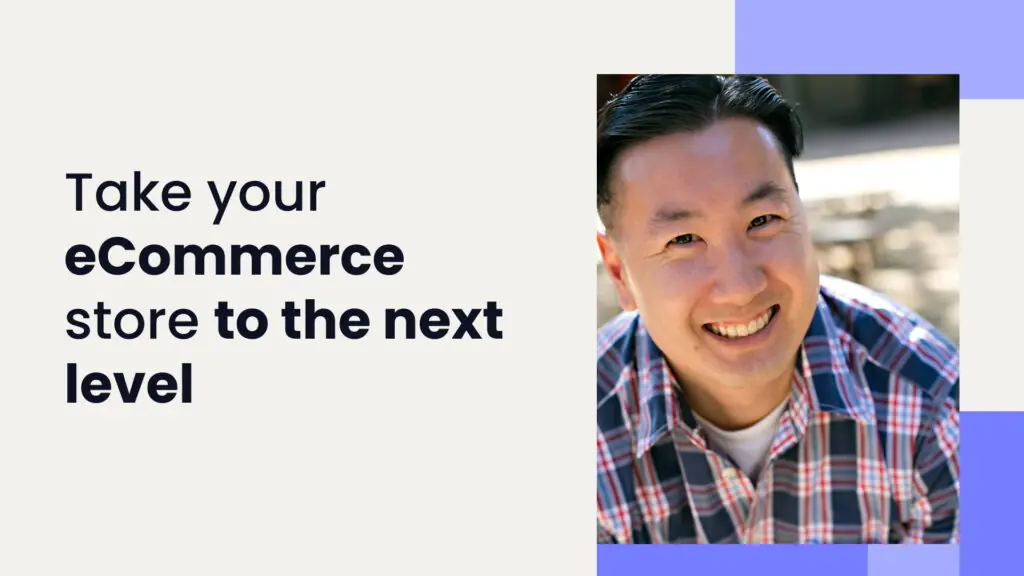An interview with eCommerce expert and owner of the successful blog MyWifeQuitHerJob.com, Steve Chou:
What are the biggest benefits of becoming an eCommerce seller?
I would say the biggest benefits are that you are creating a business that doesn’t take as much time, that has a lot of value, and it’s a business that you can eventually sell at a pretty decent multiple.
The reason why we started it when my wife was pregnant with our first child is because eCommerce allows you to time-shift your time working on the business. And if you decide to sell on Amazon, for example, where the fulfillment is taken care of for you, you can literally run a multi-million dollar business with just a handful of people, which is unheard of in other industries.
If someone is interested in starting up an eCommerce business, what steps should they take in a nutshell?
Here’s how I usually teach it. Well, obviously first you have to find out what you want to sell. And I would say the easiest way to do that is to scratch your own itch. We decided on handkerchiefs because we needed handkerchiefs for our wedding and we figured there were other people out there as well.
Then, once you know what you want to sell, I always suggest that you validate whatever product you have first. What I mean by validate is you want to make sure it sells before you buy a large quantity from a factory or a manufacturer. So what I would suggest is you can start selling on eBay or Amazon first just to make sure that your product has legs before you make that bulk order.
And then once you know that you’re going to follow through with a product, then you start your own website. The eventual goal obviously is to sell on as many different platforms as you can, but I would go in that order. And the reason you need your own website is because you need to own your own brand. You need to have customer information, you need to be in control of every aspect of your business, and that’s the best way to create a long-term eCommerce business.
Do you have a strategy for choosing which products to sell?
I teach a class of over 5,000 people and everyone has different hangups when it comes to product selection. The best way, really, is to pick a product to sell that you have some expertise in or you have some sort of problem that you’re experiencing. Obviously we did the latter, but there are people in my class that just go based on their skills.
Subscribe to the eCommerce newsletter for
top industry insights
Let me just give you a quick example. I play ultimate frisbee. So I know that when I play at night my hands get cold, so maybe I’d want to invent some gloves for that. So that’s the best way to do it.
There’s a lot of people who, you know, have writer’s block. Or maybe writer’s block isn’t the right term, but they can’t think of anything to sell. That’s when tools come in. So there’s this tool called Jungle Scout that literally scrapes every single listing on Amazon and tells you approximately how much each listing makes. And by querying this database you can say, hey, give me a product that makes at least $5,000 a month, has less than 2,000 people selling it, and less than 100 reviews, and that database will spit out products to you that meet that criteria. And then you can go through those products and pick ones that you might potentially want to sell or add value to.
So there’s two different ways to do it. One, if you can’t think of anything, and the other way is if you just look at your own problems and what your needs are.
How can eCommerce sellers choose the best platform for their brand and their products?
Okay, so we already talked about eBay, Amazon, and your own store, and even Walmart has a platform. I always like to start with the validation process, as I mentioned. This is where you don’t have to have your own audience. You can literally list something and just get your first couple sales under your belt.
And so I would take that product, once I have it, I would probably get a prototype or just buy some samples. You know, maybe I’d get like 50 units or something. And I would just try to sell it. And I would start with maybe eBay and Amazon because it’s relatively easy to just start selling on those platforms. You don’t have to build an audience, you don’t have to do much marketing to get some sales.
And then once you get your first couple sales, what you want to do at this point is convince yourself that your product has legs. You want to convince yourself to place that bulk order. What you’re trying to do in this initial phase is build confidence that you want to follow through. As long as there’s people buying your products, well that will give you the confidence to place that bulk order, because you know that no matter what, you can at least sell on these marketplaces and eventually liquidate your inventory should it not be able to sell.
And as I mentioned before, once you know, you always want to start your website early, so that you have your own brand, your own website. These days, people who shop on Amazon always look for the brand. I think it’s like 70% of people check the brand because there are so many knockoffs on that platform. So that’s the order that I would proceed in.
What are the biggest challenges that eCommerce sellers face in today’s climate?
I would say the biggest challenge for the past couple years has been the supply chain. Due to Covid, it’s been really hard to get products in. I think it’s eased up this year, which, it’s ironic because we actually didn’t have any problems getting product during the pandemic, but this year we’re actually having some problems. So there’s still, depending on what you sell, there’s different challenges that you have.
The other challenge right now is inflation. All of the suppliers are raising their prices, which I guess maybe this isn’t a problem, because then you in turn raise your own prices. But just generally, people are, because we’re kinda in the midst of a recession right now, you’re forced to raise prices. And so just the pricing has been a little challenging.
And also, especially, I can say this on Amazon. It’s become a lot more competitive over the years. Mainly because Amazon has been courting all these Chinese sellers, the platform’s actually flooded with all of these copycats now.
What tips do you have for eCommerce sellers during a recession?
What’s ironic about everything I just said is I think I started all of my businesses during the recessions. And the recession is actually a great time to start because ironically there’s not as much competition, pricing can be lower, people are a little bit more reluctant to start something, which kinda gives you an advantage.
What I will say is if you’re gonna start during the recession, make sure you keep an eye on your costs. Try to eliminate any unnecessary costs when you start, and all you have to do is basically weather the storm. And the fact that you started during the recession means that you’ll be a lot more powerful once the economy does improve.

What is the most common misconception about eCommerce inventory management?
I would say the biggest misconception is that you have to deal with inventory. Thanks to what are called 3PLs, these are called third party logistics firms, there’s actually a bunch of places around the world that will store and ship your inventory for you. So you can use a 3PL to store your inventory, you can use Amazon FBA, this is where Amazon does the fulfillment for you, or you can even consider doing dropshipping. Dropshipping is where you take orders, but then your supplier is responsible for delivering those products to the end customer.
Might also interest you:
- 100 questions for eCommerce sellers to ask ChatGPT
- 14 strategies to improve your eCommerce business’s financial health
- Sales forecasting: Your secret weapon for eCommerce growth
What are some of the biggest mistakes you see eCommerce sellers making?
There’s a number of mistakes across the different stages of the business. I would say if you’re just starting out, the biggest mistake is not validating your product and ordering a big shipment without knowing that it’s gonna sell, or without having a high confidence that it’s gonna sell.
Another mistake I see, when dealing with suppliers especially overseas, is not getting an inspector. Just because you get a sample that looks great, and you place your first bulk order, it doesn’t mean that the bulk order items are gonna look exactly like the sample. You have to have it inspected over there, just to make sure. Don’t be too trusting of anyone, especially early on.
Now when you’re established, ironically, the biggest mistake I see is people trying to scale too quickly. Once you start making a lot of money, you kinda get drunk on that, and you start trying all sorts of different tactics to get additional business, because you want to grow. But the best way to proceed once you’re kinda more established is to just double down on what’s working, and only expand once you’ve kinda tapped out on whatever’s already working again.
Growing too fast is actually a big problem, because, and I’ve fallen into this trap in the past, when you try to grow too fast, you end up taking some unnecessary risks, and you end up squandering some money. So just double down on what’s already working.
What are the must-have tools for growing your eCommerce business?
So, again, this is for different stages, right? I’d say if you’re selling on Amazon, a research tool like Jungle Scout or Helium 10 is essential. Mainly because you get data, and that will give you data that will allow you to make important decisions on what to sell, how to create your listing, what keywords people are searching for, and whatnot.
Now outside of Amazon, with your own store, these are the essentials: an email marketing tool, I use Klaviyo; an SMS marketing tool, I use Postscript for that. Basically the goal with your own business of course is to build your own customer base, build your brand. And the only way you can build your brand is by bringing people back to your site over and over and over again, so that, you know, your name becomes kinda like a household name. So I’d say email, SMS, I like to use Messenger also, that’s like another tool that allows you to just kinda manage communications on Messenger.
And outside of that, in terms of apps, as you can probably tell, I’m not actually a huge app lover. Like I try to actually use as few apps as possible to keep expenses down, and every app that you install is actually another point of failure. I would say those are like the main ones. Now, once you start branching out a little bit, there’s other apps that you can use to improve your business but those are the core ones that I think every single business should have.
Popular content
- 14 strategies to improve your eCommerce business’s financial health
- 50+ ChatGPT prompts to elevate your eCommerce business
- A guide to pricing your product on Amazon
- 5 marketing metrics all eCommerce businesses should track
- All about Amazon PPC
How can eCommerce sellers improve their conversion rate?
The biggest thing that you can do, really, is to redesign your website for conversions. I’ll give you a couple rules that I follow. Every single page on your website should just have one objective, and one objective only. So for example, on your homepage, that one objective should be to click to view a list of products. On your product page, the only objective should be to click on the “add to cart” button. On the shopping cart page, the only objective should be to go to checkout. If you design your site in a way that funnels people to a single objective, that will drastically improve your conversion rate.
Now in Amazon land, it’s really about the images and your copy. So, I mean, these are all skills that are acquired over time, but your images have to be great. When someone is shopping online, there’s no other way for them to judge your product except for the images so take multiple images at different angles.
What else improves the conversion rate? Trust seals during checkout, testimonials, you know, anything that provides some amount of social proof for whatever you sell will also improve your conversion rate. Those are probably the primary things.
What marketing strategies should sellers use to grow their businesses?
I want to talk about one that not everyone is using, or not a whole lot of people are using, which is content marketing. When it comes to selling online and building your brand, what you want to do is you want to build an audience, right? And the best way to build an audience is to create content that resonates with that audience. So for example, let’s say I sell fishing t-shirts, right? What I want to do is I want to write content that fishermen love to read, and so that way I have an audience of fishermen that I can market my products to. You know, there is like advertising and all that, but I mean, fundamentally you need a long term or a consistent way of bringing in traffic and I would say content is probably the best strategy for that.
What is the number one piece of advice that you give to people looking to take their eCommerce business to the next level?
Actually what I just said was that (laughs). I would say in order to take your business to the next level, you need to be running content and you need to be building a list of some sort, whether that be email or SMS. You need a way to be able to bring people back.
One thing that I focus on with my store is the lifetime value of a customer. So once I get that customer in the door, I’m constantly contacting them on at least a weekly basis, cross-selling them different items that are related to what they bought. Someone who has bought in your store is 65% more likely to buy again. And so once you have that customer, you want to keep them in your database.
This is incidentally why selling on Amazon isn’t great. You get that one sale and you don’t have any information and you’re done right there. But with a store, you can continually sell to that same person. We have customers who have purchased with us consistently and in quantity for like the last 5-7 years! And those customers are very valuable. All you actually need is a handful of those, and you can create a 6-figure business just right off the bat. If you collect more of those and do all of the other things you can easily make a 7-figure business. And if you expand and try to scale, you can easily create an 8-figure business using those strategies.
What KPIs do you find are the most important for eCommerce sellers to track?
I like to track average order value (AOV), and I also like to track the repeat customer rate. And I’ll give you some stats from my store. Our average order value is about $60, and I was just looking at the breakdown of this average order value with our store, and I noticed that 46% of those people spend less than half of our average order value. Whereas 10% of our customers spend more than double our average order value, alright?
So that’s from just a pure order standpoint, but if you look at it from a revenue standpoint, those 10% that spend over twice our average order value actually make up almost 50% of our sales. Whereas those people, the bulk of our customers who spend less than half of our AOV, actually only make up like 12% of our sales. I don’t remember if I’m getting the numbers exactly right but that’s approximately what it is.
And so when I did that analysis I was like, why am I focusing on these guys who don’t spend that much money? I should be focusing on the big guys. And in our case, for our store, those big guys are wedding and event planners.
So now, we look for large orders, and whenever there’s a large order, we actually call them and say, hey, are you a planner? And then we give them a special coupon code and a dedicated rep and they come buy from us, you know, for an extended period.
The other thing I noticed is that a lot of those cheapy customers, I should say, were coming from Facebook, whereas all of the bigger customers were coming from Google, so over the years we’ve kinda deemphasized Facebook advertising, because it doesn’t bring in as good of a quality of a customer.
Have article ideas, requests, or collaboration proposals? Reach out to us at editor@8fig.co – we’d love to hear from you.
- 9 powerful legal ways to protect your eCommerce products from copycats
- The hidden cost of stockouts: A data-driven analysis showing how missing inventory impacts your eCommerce revenue
- 100 questions for eCommerce sellers to ask ChatGPT
- How to write product titles and descriptions that convert
- Holiday rush readiness: top 8 tips for handling seasonal demand peaks
Subscribe to the eCommerce newsletter for
top industry insights
to our blog
Read the latest
from 8fig

AI is quietly reshaping eCommerce. Karma’s Hadas Bar-Ad explores how today’s sellers are using intelligent tools to streamline operations, boost efficiency, and drive smarter growth.

WhatsApp isn’t just for memes and group chats anymore. With a 98% open rate, it’s the secret weapon your eCommerce marketing strategy might be missing. Here’s how to do it right.

Stuck with extra inventory after Amazon’s Spring Sale? Learn five smart strategies to clear unsold stock, boost cash flow, and avoid future overstocks with smarter inventory planning.
